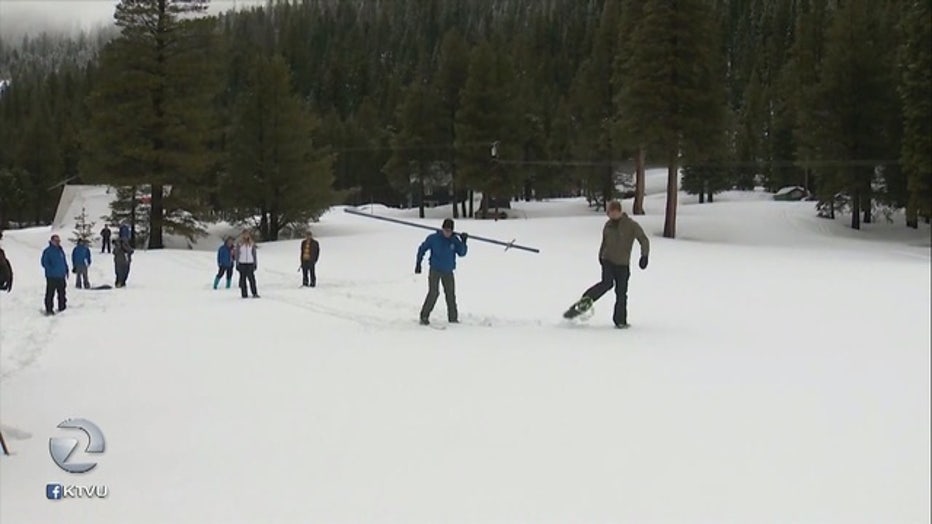California's water supply gets a grade of A+ due to Sierra snowpack
Why Aprils snow survey is most important and what it said
Californias April snow survey is considered the most important of the year as the states water planning, and supplies are based on the numbers drawn. Average performance usually earns a grad of C, but for the state water supply, its an A plus, because we are slightly above average with a historical snowpack for the Sierra and Trinity mountains.
EL DORADO COUNTY, Calif. - At mid-morning, the California Department of Water Resources announced the results of its most important snow survey of the year. That's because the state's water planning and supplies are based on this "peak of the rain and snow season" measurement.
Average performance usually earns a grade of C, but for the state water supply, it's an A plus because we are slightly above average with a historical snowpack for the Sierra and Trinity Mountain ranges.
Tuesday's April snow measurement is the most important because it is usually the historical peak of the snow and rain season with snow melt runoff a key factor in filling the reservoirs. Even the governor showed up for the results of the statewide water situation.
Phillips Station at the entrance to the Sierra-At-Tahoe Ski Resort is just one of 265 snow courses, plus another 130 remote snow sensors blanketing the vast snowpack area.
A miracle March, with heavy snow saved the season. "March turned out to be a really significant month this year in terms of our snowpack hydrology," said DWR Water Engineer David Rizzardo. "Our snowpack is about 105%, using that metric, our automated snow sensor network this morning was about 110% of April 1st average snowpack. So, we're in a good place right now," said California Department of Water Resources Surveyor Andy Reising.
"We will see, over the course of the next couple of months how this snowpack translates into runoff into rivers, streams and reservoirs that our communities, our environment and our economy, the food we grow in California all relies on that," said Water Resources Director Karla Nemeth.

Before you head to the plant nursery or landscaper, consider that climate change is highly likely to affect this, meaning every water agency asks us to keep conserving within their individual rules. "Average is awesome. We've had some pretty big swings in the last couple years, but average may becoming less common feature of snowpack in California," said Nemeth.
As to the all-important reservoirs, California's big six mega reservoirs are already 113% of their historical levels and still have 16% of their capacity available to store any additional rains, plus the coming snow melt. All but three of Northern California's 37 key reservoirs are above 100% normal, the rest very close to normal. "Many of us growing up learned the old adage: 'April showers bring May flowers.' Well, in California we know that winter snows bring summer flows," said California Natural Resources Secretary Wade Crowfoot.
Currently, farmers and other water rights holders are getting 30% of their allocation, but that could increase when May's final decisions are made for the summer and fall.

